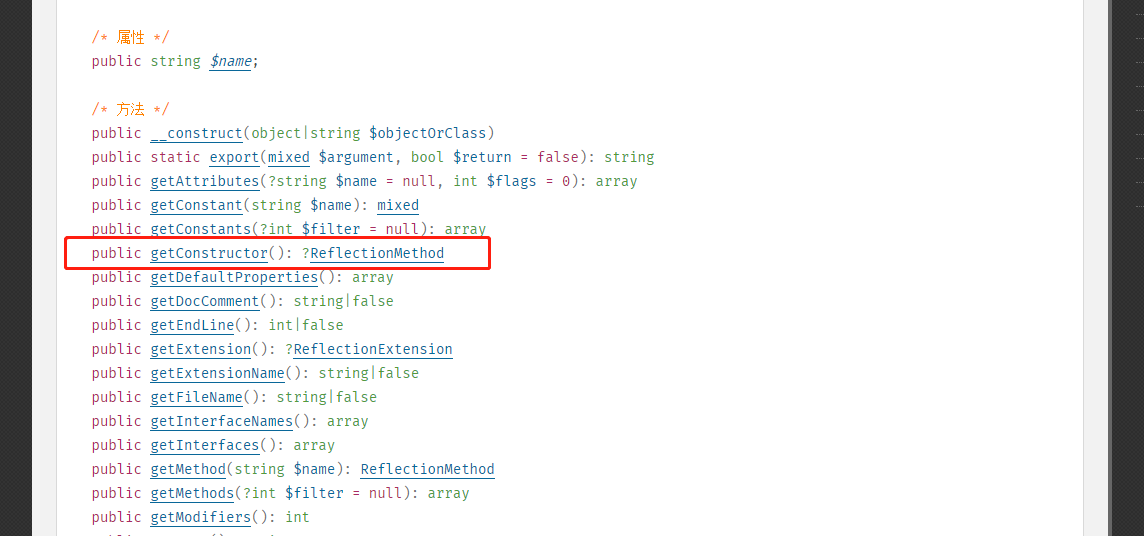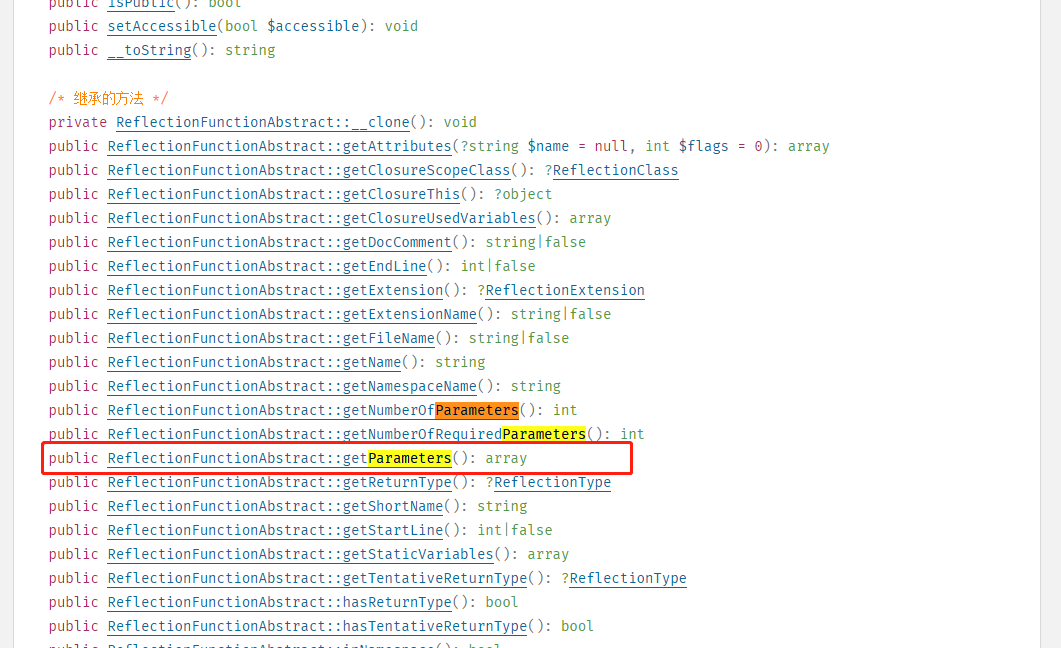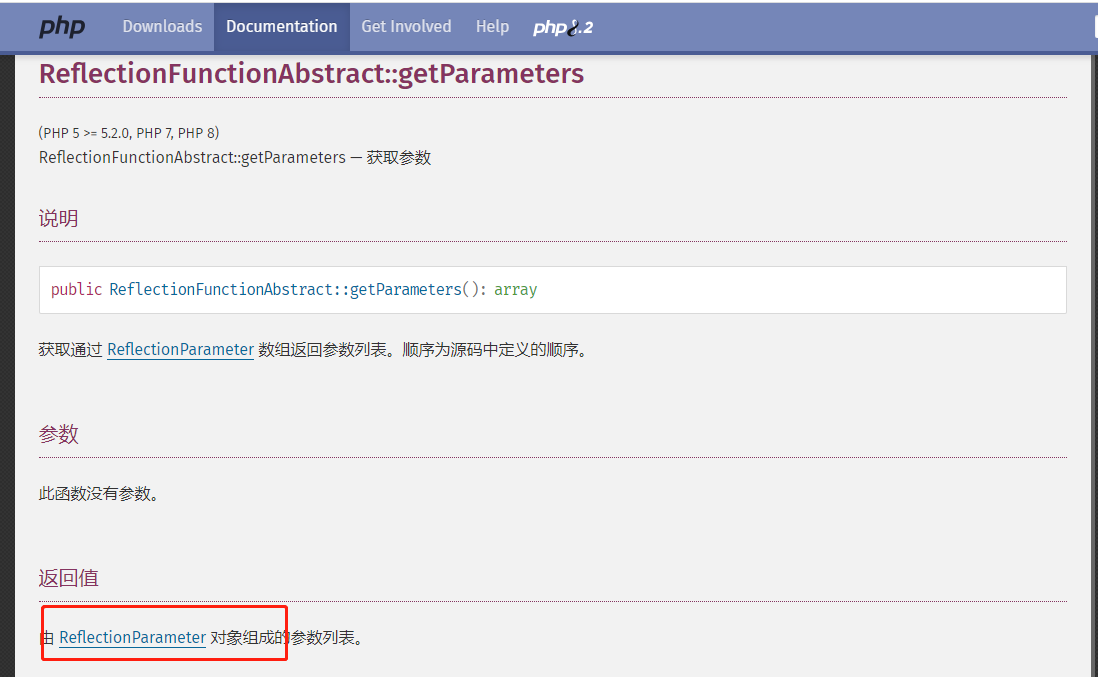附录五:Container之resolveDependencies方法
约 1321 字大约 4 分钟
2025-07-08
源文件路径:vendor\laravel\framework\src\Illuminate\Container\Container.php
方法名:resolveDependencies
/**
* Resolve all of the dependencies from the ReflectionParameters.
*
* @param array $dependencies
* @return array
*
* @throws \Illuminate\Contracts\Container\BindingResolutionException
*/
protected function resolveDependencies(array $dependencies)
{
$results = [];
foreach ($dependencies as $dependency) {
// If this dependency has a override for this particular build we will use
// that instead as the value. Otherwise, we will continue with this run
// of resolutions and let reflection attempt to determine the result.
if ($this->hasParameterOverride($dependency)) {
$results[] = $this->getParameterOverride($dependency);
continue;
}
// If the class is null, it means the dependency is a string or some other
// primitive type which we can not resolve since it is not a class and
// we will just bomb out with an error since we have no-where to go.
$results[] = is_null($dependency->getClass())
? $this->resolvePrimitive($dependency)
: $this->resolveClass($dependency);
}
return $results;
}首先我们需要清楚的是,$dependencies是通过反射的方式获取到的对象构造函数需要的参数值。由于参数值可能很多,因此这里是传递的数组。但是这个数组大家需要注意的是,每个数组中的元素,并不是简单的字符串类型的值,而是对象类型的值。那这个对象的类型是什么呢?
首先需要追溯$dependencies是怎么产生的:
$reflector = new ReflectionClass($concrete);
if (! $reflector->isInstantiable()) {
return $this->notInstantiable($concrete);
}
$this->buildStack[] = $concrete;
$constructor = $reflector->getConstructor();
if (is_null($constructor)) {
array_pop($this->buildStack);
return new $concrete;
}
$dependencies = $constructor->getParameters();
try {
$instances = $this->resolveDependencies($dependencies);
} catch (BindingResolutionException $e) {
...
... ...上面这段代码正是调用resolveDependencies方法前,build方法中的核心代码。可以看到,$dependencies是反射类的构造器通过调用getParameters方法获取到的值,继续追溯getConstructor方法:
大家可以查看php的在线手册,在这个页面:https://www.php.net/manual/zh/class.reflectionclass.php,包含了ReflectionClass能调用的所有方法:

可以看到,getConstructor方法返回的是ReflectionMethod类型的值。
于是我们继续找到ReflectionMethod的手册页面(https://www.php.net/manual/zh/class.reflectionmethod.php),找到getParameters方法:

点进去仔细查看这个页面的说明:

至此,我们可以确定,$dependencies数组中的元素类型,是ReflectionParameter类。这一点,和后面我们看到的resolvePreimitive方法中给出的形参类型一致。
弄清楚这一点,我们才能知道,当后面的代码出现$dependency->name,$dependency->getClass(),以及$parameter->isDefaultValueAvailable()和$parameter->getDefaultValue()、$parameter->isOptional()、$parameter->getClass()->name时,究竟发生了什么。
接下来我们继续看源码:
foreach ($dependencies as $dependency) {
// If this dependency has a override for this particular build we will use
// that instead as the value. Otherwise, we will continue with this run
// of resolutions and let reflection attempt to determine the result.
if ($this->hasParameterOverride($dependency)) {
$results[] = $this->getParameterOverride($dependency);
continue;
}
// If the class is null, it means the dependency is a string or some other
// primitive type which we can not resolve since it is not a class and
// we will just bomb out with an error since we have no-where to go.
$results[] = is_null($dependency->getClass())
? $this->resolvePrimitive($dependency)
: $this->resolveClass($dependency);这里是直接遍历整个数组,然后使用方法$this->hasParameterOverride($dependency)判断是否存在参数覆盖,我们看一下hasParameterOverride方法的源码:
protected function hasParameterOverride($dependency)
{
return array_key_exists(
$dependency->name, $this->getLastParameterOverride()
);
}getLastParameterOverride是获取make时候存入with数组的参数。如果有覆盖,就将$this->getParameterOverride($dependency)中的值存入result数组,中断本次循环继续执行下一次循环。我们继续看一下getParameterOverride方法的源码:
protected function getParameterOverride($dependency)
{
return $this->getLastParameterOverride()[$dependency->name];
}还是通过 getLastParameterOverride 获取 with 数组,然后在数组中通过 name获取。
如果hasParameterOverride方法返回值为false,判断这个类是不是存在于当前代码中,如果不存在,则使用resolvePrimitive方法,看看上下文绑定中有没有对应的值,再看看依赖自己有没有默认值。如果存在则使用resolveClass方法,就是使用make函数解析这个依赖。
resolvePrimitive:
protected function resolvePrimitive(ReflectionParameter $parameter)
{
if (! is_null($concrete = $this->getContextualConcrete('$'.$parameter->name))) {
return $concrete instanceof Closure ? $concrete($this) : $concrete;
}
if ($parameter->isDefaultValueAvailable()) {
return $parameter->getDefaultValue();
}
$this->unresolvablePrimitive($parameter);
}注意这个方法中参数$parameter的类型是:ReflectionParameter,我们在本节的前面已经给大家分析过怎样确定$parameter变量的的类型。
resolveClass:
protected function resolveClass(ReflectionParameter $parameter)
{
try {
return $this->make($parameter->getClass()->name);
}
// If we can not resolve the class instance, we will check to see if the value
// is optional, and if it is we will return the optional parameter value as
// the value of the dependency, similarly to how we do this with scalars.
catch (BindingResolutionException $e) {
if ($parameter->isOptional()) {
return $parameter->getDefaultValue();
}
throw $e;
}
}resolveDependencies方法源自Container类的build方法,而build又是核心方法resolve中调用的一个子方法。这个方法之所以命名为resolveDependencies,正是因为Laravel框架底层实现"依赖注入"的方式就是使用PHP5之后出现的反射。实际上,使用反射来构建类,必然绕不过循环。因为通过反射提供的相关方法,只能获取到构造函数的参数列表,由于参数列表中的参数数目和参数类型是不确定的,这里只能通过循环去做处理。
下面是另一个处理"依赖注入"的典型方式:
<?php
class Dependence1 {
function foo() {
echo "foo";
}
}
class Dependence2 {
function foo2() {
echo "foo2";
}
}
final class myClass
{
private $dep1;
private $dep2;
public function __construct(
Dependence1 $dependence1,
Dependence2 $dependence2
)
{
$this->dep1 = $dependence1;
$this->dep2 = $dependence2;
}
}
$constructor = new ReflectionMethod(myClass::class, '__construct');
$parameters = $constructor->getParameters();
$dependences = [];
foreach ($parameters as $parameter) {
$dependenceClass = (string) $parameter->getType();
$dependences[] = new $dependenceClass();
}
$instance = new myClass(...$dependences);
var_dump($instance);这段代码的运行结果如下:
object(myClass)#6 (2) {
["dep1":"myClass":private]=>
object(Dependence1)#4 (0) {
}
["dep2":"myClass":private]=>
object(Dependence2)#5 (0) {
}
}